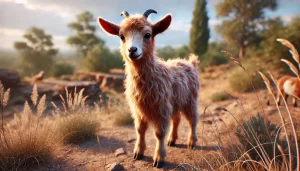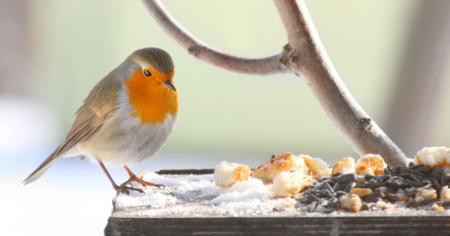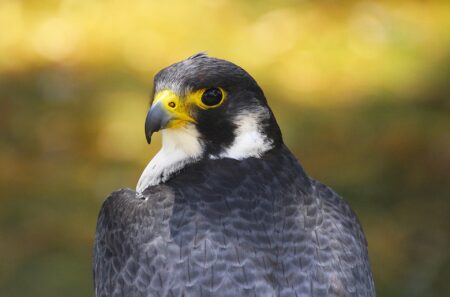In a world that seems to move at an ever-increasing pace, where speed and efficiency are often prized above all else, a group of animals defy this trend. These creatures, the slowest in the animal kingdom, remind us there’s value in taking things slow.
While cheetahs sprint across savannas and peregrine falcons dive at breathtaking speeds, the animals we’re about to explore move at a pace that’s almost imperceptible to the human eye. These unhurried beings have earned names that have become synonymous with lethargy, yet they represent nature’s embodiment of tranquility.
Join us as we amble through the world of these leisurely animals, showcasing nature’s diverse spectrum of pace and disposition. From the treetops of tropical forests to the depths of the ocean, we’ll discover that slow and steady sometimes win the race or at least provide a fascinating glimpse into the marvels of biodiversity.
8 Slowest Animals in the World
I. The Slow Lane of Life
In the grand theater of nature, we often find ourselves captivated by displays of speed and agility. The cheetah’s blur of spots as it races across the African plains or the peregrine falcon’s death-defying stoops that break the sound barrier are the performances that tend to steal the show. But what about the other end of the spectrum? What about those creatures that seem to have missed nature’s memo about the need for speed?
These are the animals that have mastered the art of taking it easy. They are the champions of conservation, not just of energy, but of a lifestyle that starkly contrasts our fast-paced world. As we explore these slow-moving marvels, we’ll discover that their unhurried approach to life is not a weakness but a fascinating adaptation that has allowed them to thrive in their respective environments.
II. Sloth Shenanigans: The Original Slow-Motion Stars
Regarding slow living, no creature embodies the concept quite like the sloth. These arboreal mammals have elevated lethargy to an art form, spending their days hanging upside down in the treetops of Central and South American rainforests, barely moving a muscle.
The secret to the sloth’s extreme energy conservation lies in its incredibly low metabolic rate. This slow burn of energy means that sloths can subsist on a diet of just a few leaves and twigs, foods that are low in nutritional value but abundantly available in their canopy homes. Their deliberate pace is so slow that algae grow on their fur, providing camouflage and potentially even supplementary nutrients.
But the sloth’s slowness isn’t just a matter of laziness – it’s a feat of evolutionary engineering. German zoologists have discovered that sloths have a unique anatomical structure that sets them apart from other mammals. While their arms are exceptionally long, their shoulder blades are surprisingly short. This configuration allows them to have a large reach without expending much energy, enabling them to make the same movements as other animals but at a fraction of the energy cost.
When they decide to move, sloths crawl at what National Geographic describes as a “breakneck” pace of 1 foot per minute. To put that in perspective, if a sloth and a tortoise raced, the tortoise would look like Usain Bolt in comparison.
III. Gastropod Glaciers: Slime-Trailing Slowpokes
A. Garden Snail: One-Footed Wonders
From the treetops, we descend to ground level, where we encounter another group of slow-moving marvels: gastropods. The common garden snail, a familiar sight in gardens and parks worldwide, is a prime example of nature’s unhurried approach to locomotion.
The secret to the snail’s slow but steady movement lies in its single, flat, muscular organ, the foot. This remarkable appendage propels the snail forward through wave-like muscular contractions. But the real magic happens beneath the snail, where glands in the foot secrete a trail of mucus.
This slimy substance serves two crucial purposes. It reduces friction, allowing the snail to glide smoothly over various surfaces. Second, it leaves behind the characteristic silvery trail we often see in our gardens, a glistening testament to the snail’s passage.
According to the Dudley Zoo, a garden snail’s top speed is a blistering 1/2 inch (1.3 centimeters) per second. However, when they’re taking their time, they can slow down to about 1/10 of an inch (0.28 centimeters) per second. At this pace, watching grass grow might seem like an action-packed activity in comparison.
B. Banana Slug: Slime-Rappelling Champions
If you thought the garden snail was slow, meet its cousin, the banana slug. These bright yellow mollusks, native to the forests of North America’s Pacific Northwest, take slow to a whole new level.
University of Eastern Kentucky biologist Branley Allan Branson made a compelling case for the banana slug as the slowest animal on Earth. He observed a large banana slug covering a distance of 6.5 inches in 120 minutes. At this rate, Branson noted, “a tortoise would seem fleet-footed.”
Like their garden snail relatives, banana slugs move by propelling themselves along their single muscular foot. However, they’ve developed some unique adaptations that set them apart in the world of slow-moving creatures.
The banana slug’s foot glands secrete dry granules of mucus, which then absorb surrounding water to transform into the characteristic slime. This slippery substance lubricates their path and serves another fascinating purpose. The banana slug has a mucus plug at the end of its tail that it can use to generate a bungee cord of slime, allowing it to rappel down from high places. It’s like extreme sports but in extreme slow motion.
IV. Aquatic Ambles: Underwater Slowness Sensations
A. Starfish Strolls: Tube Feet Triumph
Our journey into the world of slow-moving creatures now takes us beneath the waves, where we encounter the sea star, commonly known as the starfish. These fascinating echinoderms may look stationary to the casual observer, but they are indeed capable of moving just very, very slowly.
The secret to the sea star’s locomotion lies in its thousands of tiny tube feet. These small, fluid-filled appendages extend from the underside of the sea star’s arms, allowing it to grasp surfaces and slowly pull itself along.
According to the National Oceanic and Atmospheric Administration (NOAA), an adult sunflower sea star – a species that can grow up to a meter in diameter can move at a pace of about one meter (roughly one yard) per minute. This might not sound impressive until you consider it’s achieving this speed using all 15,000 of its tube feet in a coordinated effort.
B. Sea Anemone Shuffle: Barely-There Movements
If you thought the sea star was slow, wait until you meet its cnidarian cousin, the sea anemone. Related to corals and jellyfish, over 1,000 species of sea anemones are found in oceans around the world. These colorful creatures are masters of staying put, often spending their entire lives attached to a single spot on a rock or coral reef.
Sea anemones use their single foot, called a pedal disc, and mucus secretions to anchor themselves firmly in place. They typically only move in response to threats or unfavorable conditions, and their pace is glacial when they do. Scientists have measured their movement at about 4/10 of an inch per hour, a slow speed that can only be observed through time-lapse photography.
This sedentary lifestyle suits the sea anemone just fine. Instead of chasing after their food, they wait for it, using their tentacles to catch small fish and plankton that swim too close. In the world of sea anemones, patience truly is a virtue.
V. Reptilian Relaxation: Tortoise Takes It Easy
Without mentioning the tortoise, particularly the giant Galapagos tortoise, no discussion of slow-moving animals would be complete. These living legends of longevity, capable of living for 150 years or more, have become synonymous with slow and steady movement.
The Galapagos tortoise famously caught the attention of Charles Darwin during his visit to the islands in 1835. In his Zoology Notes, Darwin wrote: “One large one, I found by pacing, walked at the rate of 60 yards in 10 minutes, or 360 in the hour. At this pace, the animal would go four miles in the day & have a short time to rest.”
However, modern measurements suggest that Darwin might have been a bit generous in his speed assessment. Stephen Blake, coordinator of the Galápagos Tortoise Movement Ecology Programme, tells the BBC that their tortoises move at a maximum speed of two kilometers (1.2 miles) per hour. Blake humorously suggests that “Darwin was probably chasing them,” which would explain the discrepancy.
Despite their slow pace, Galapagos tortoises are capable of covering surprising distances. They’ve been known to traverse entire islands in search of food or mates, demonstrating that persistence can lead to impressive achievements even at a tortoise’s pace.
VI. Primate Procrastination: The Deceptive Slow Loris
The slow loris, a small primate native to Southeast Asia, presents an interesting case in our exploration of slow-moving animals. At first glance, with its large eyes and deliberate movements, the slow loris seems to epitomize the concept of slowness. However, this creature has a surprising secret up its furry sleeve.
For the most part, the loris lives up to its name, moving with careful, measured actions as it navigates through the trees. But the slow loris can switch gears with astonishing speed when catching prey. According to the Cleveland Metroparks Zoo, when a slow loris spots potential prey, it can strike with lightning quickness. It stands upright, grasping a branch with its feet, and throws its body forward to capture its target with both hands.
But the slow loris’s surprises don’t end there. Despite its cuddly appearance, this small primate is the world’s only venomous primate. It possesses toxins in its mouth and can release additional toxins from a gland on the side of its elbows. The loris spreads this poisonous cocktail on its fur as a defense against predators or delivers it directly through a bite if threatened.
This combination of generally slow movement punctuated by bursts of speed and its venomous nature makes the slow loris a fascinating study of deceptive appearances in the animal kingdom.
VII. Manatee Meanders: Gentle Giants in No Hurry
Our journey through the world of slow-moving animals brings us to the coastal waters and rivers of the Americas, home to the manatee. Often called sea cows, these gentle giants of the water embody a peaceful, unhurried approach to life.
Manatees can grow up to 13 feet long and weigh as much as 3,500 pounds. With such impressive dimensions, it’s no wonder that these marine mammals are rarely in a rush. They typically cruise leisurely, just a couple of miles per hour, spending much of their time floating in shallow waters.
However, like many animals we’ve explored, manatees can surprise bursts of speed when necessary. They can accelerate to 20 miles per hour if the situation calls for it. This ability likely evolved as a defense mechanism, although manatees have few natural predators in their native habitats.
Unfortunately, the manatee’s slow lifestyle and gentle nature have made them vulnerable to human activities, particularly boat strikes. However, thanks to robust conservation efforts, the West Indian manatee in Florida was removed from the endangered species list in 2017, marking a significant victory for these unhurried sea dwellers.
Conclusion: The Virtue of Slowness
As we conclude our journey through the world of nature’s slowest creatures, we’re left with a newfound appreciation for the virtue of slowness. These animals, from the algae-covered sloths in the treetops to the barely-moving sea anemones on the ocean floor, remind us that there’s more than one way to thrive in the natural world.
Each creature has evolved its slow lifestyle to adapt to its environment successfully. Sloths conserve energy in nutrient-poor rainforests, tortoises carry their protective homes on their backs, and sea anemones wait patiently for food to come to them. Their unhurried pace isn’t a weakness but a carefully honed survival strategy.
These animals offer a different perspective in our fast-paced human world, where we often equate speed with success. They show us that moving slowly and deliberately can sometimes be just as effective as racing ahead. They remind us of the importance of patience and observing and appreciating the world around us.








